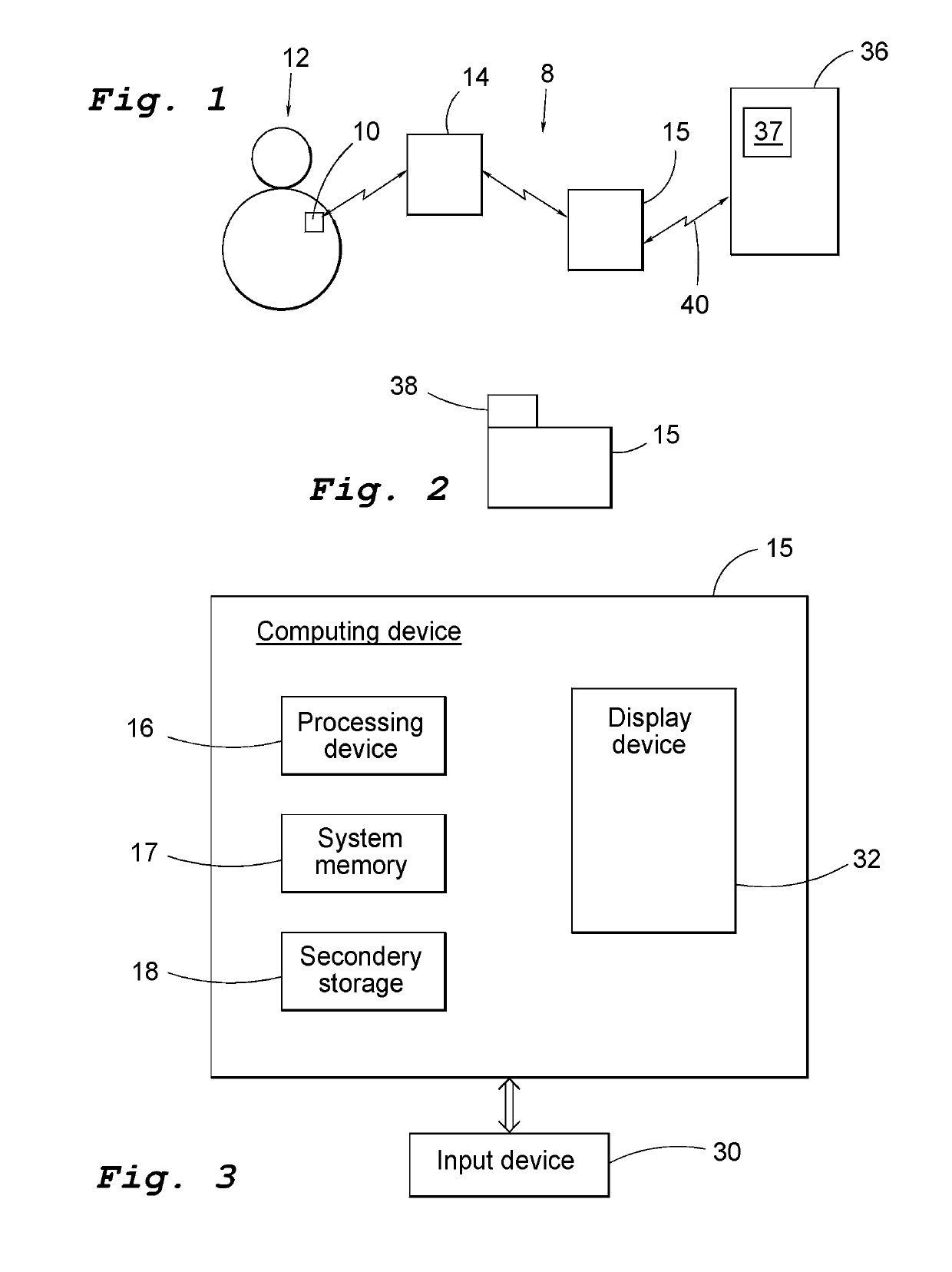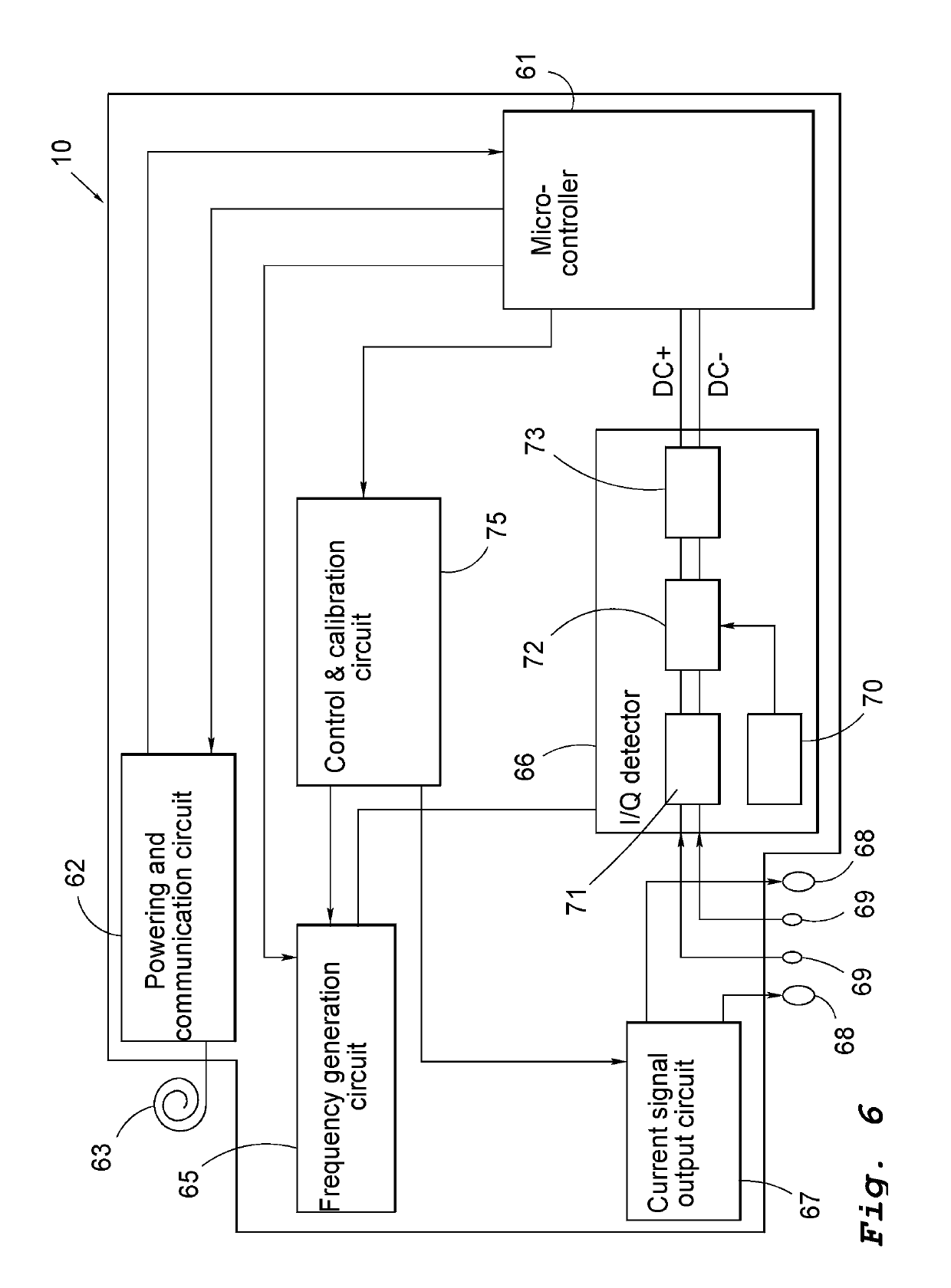Implantable Sensor and Method for Such Sensor
a bioimpedance and implantable technology, applied in the field of implantable medical devices and implantable sensors for measuring bioimpedance, can solve the problems of inconvenience of repeated blood sample drawing, margin of error, and inconvenient use of implantable pacemakers and implantable cardioverters-defibrillators, and achieves convenient and fast production, small size, and long service life.
- Summary
- Abstract
- Description
- Claims
- Application Information
AI Technical Summary
Benefits of technology
Problems solved by technology
Method used
Image
Examples
Embodiment Construction
[0067]With reference first to FIG. 1, an embodiment of a system for measuring or monitoring user related conditions or parameters such as different physiological parameters including hydration, glucose levels etc., health status, drug compliance, in connection with organ transplantations to monitor the vitality of an organ during transportation from donor to recipient, and to monitor signs or rejection, infections or ischemia, monitor the ovarian cycle using e.g. temperature, and monitoring glucose and hydration to identify alertness of aviators, truck drivers etc. There is clearly a need of such a system that can be used with small, reliable, easy and cheap to produce and that can be carried over extended periods of time will be described. In preferred embodiments of the invention, the system uses a sensor that measures the impedance of body tissue and the impedance measurements are used to detect or monitor glucose levels.
[0068]A sensor 10 for measuring electrical bio-impedance of...
PUM
 Login to View More
Login to View More Abstract
Description
Claims
Application Information
 Login to View More
Login to View More - R&D
- Intellectual Property
- Life Sciences
- Materials
- Tech Scout
- Unparalleled Data Quality
- Higher Quality Content
- 60% Fewer Hallucinations
Browse by: Latest US Patents, China's latest patents, Technical Efficacy Thesaurus, Application Domain, Technology Topic, Popular Technical Reports.
© 2025 PatSnap. All rights reserved.Legal|Privacy policy|Modern Slavery Act Transparency Statement|Sitemap|About US| Contact US: help@patsnap.com



